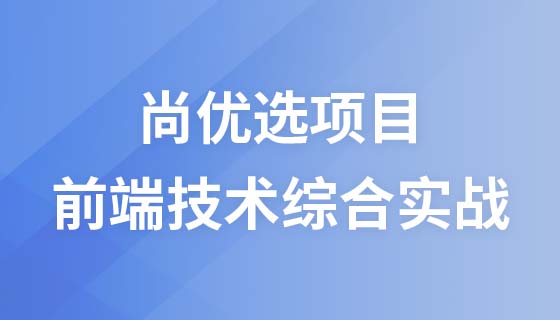
在go语言中,进行网络编程时,对http客户端和服务器进行测试是确保应用稳定性和正确性的关键一环。net/http/httptest 包是go标准库提供的一个强大工具,它允许开发者在不启动真实网络服务的情况下,模拟http请求和响应,从而实现快速、可靠的单元测试和集成测试。httptest 主要提供了两种测试模式:httptest.newrecorder 用于测试 http.handler 函数,而 httptest.newserver 则用于测试发出http请求的客户端代码。
当你需要测试一个实现了 http.Handler 接口(或是一个 http.HandlerFunc)的函数时,httptest.NewRecorder 是理想的选择。它创建一个 http.ResponseWriter 的内存实现,可以捕获处理函数写入的所有响应信息,包括状态码、HTTP头和响应体。
假设我们有一个简单的HTTP处理函数 myHandler,它根据请求参数返回不同的内容:
package main
import (
"fmt"
"io/ioutil"
"net/http"
"net/http/httptest"
"strings"
"testing"
)
// myHandler 是一个简单的HTTP处理函数,用于演示httptest.NewRecorder的用法
func myHandler(w http.ResponseWriter, r *http.Request) {
if r.URL.Path == "/greet" && r.Method == http.MethodGet {
name := r.URL.Query().Get("name")
if name == "" {
name = "Guest"
}
w.WriteHeader(http.StatusOK)
fmt.Fprintf(w, "Hello, %s!", name)
} else if r.URL.Path == "/error" {
w.WriteHeader(http.StatusInternalServerError)
fmt.Fprint(w, "Internal Server Error")
} else {
w.WriteHeader(http.StatusNotFound)
fmt.Fprint(w, "404 Not Found")
}
}
// TestMyHandler 测试myHandler函数
func TestMyHandler(t *testing.T) {
// 测试成功案例:带参数的GET请求
recorder := httptest.NewRecorder()
req, err := http.NewRequest(http.MethodGet, "/greet?name=Alice", nil)
if err != nil {
t.Fatalf("创建请求失败: %v", err)
}
myHandler(recorder, req)
// 验证状态码
if recorder.Code != http.StatusOK {
t.Errorf("期望状态码 %d, 得到 %d", http.StatusOK, recorder.Code)
}
// 验证响应体
body, _ := ioutil.ReadAll(recorder.Body)
expectedBody := "Hello, Alice!"
if strings.TrimSpace(string(body)) != expectedBody {
t.Errorf("期望响应体 %q, 得到 %q", expectedBody, strings.TrimSpace(string(body)))
}
// 测试默认参数案例:不带参数的GET请求
recorder = httptest.NewRecorder()
req, _ = http.NewRequest(http.MethodGet, "/greet", nil)
myHandler(recorder, req)
if recorder.Code != http.StatusOK {
t.Errorf("期望状态码 %d, 得到 %d", http.StatusOK, recorder.Code)
}
body, _ = ioutil.ReadAll(recorder.Body)
expectedBody = "Hello, Guest!"
if strings.TrimSpace(string(body)) != expectedBody {
t.Errorf("期望响应体 %q, 得到 %q", expectedBody, strings.TrimSpace(string(body)))
}
// 测试错误路径
recorder = httptest.NewRecorder()
req, _ = http.NewRequest(http.MethodGet, "/error", nil)
myHandler(recorder, req)
if recorder.Code != http.StatusInternalServerError {
t.Errorf("期望错误状态码 %d, 得到 %d", http.StatusInternalServerError, recorder.Code)
}
body, _ = ioutil.ReadAll(recorder.Body)
if !strings.Contains(string(body), "Error") {
t.Errorf("期望错误响应体包含 'Error', 得到 %q", string(body))
}
}当你的代码需要发起HTTP请求(即作为HTTP客户端)去调用外部服务时,httptest.NewServer 就派上用场了。它会在一个随机的可用端口上启动一个真实的HTTP服务器,并返回其URL。你可以将你的客户端代码指向这个模拟服务器的URL,从而控制外部服务的响应,而无需依赖真实的外部API。
考虑一个从Twitter API检索推文的Go函数。为了测试这个函数,我们需要模拟Twitter API的响应。
立即学习“go语言免费学习笔记(深入)”;
package main
import (
"encoding/json"
"fmt"
"io/ioutil"
"log"
"net/http"
"net/http/httptest"
"sync"
"testing"
"time"
)
// twitterResult 结构体用于解析Twitter API的JSON响应
type twitterResult struct {
Results []struct {
Text string `json:"text"`
Ids string `json:"id_str"`
Name string `json:"from_user_name"`
Username string `json:"from_user"`
UserId string `json:"from_user_id_str"`
} `json:"results"` // 注意这里需要有json tag
}
// retrieveTweets 函数模拟从外部API获取推文
// 为了测试方便,我们使其接受一个url参数,并只执行一次而不是无限循环
func retrieveTweets(url string, c chan<- *twitterResult, wg *sync.WaitGroup) {
defer wg.Done() // 确保在函数退出时通知WaitGroup
resp, err := http.Get(url)
if err != nil {
log.Printf("HTTP GET请求失败: %v", err)
return
}
defer resp.Body.Close()
body, err := ioutil.ReadAll(resp.Body)
if err != nil {
log.Printf("读取响应体失败: %v", err)
return
}
r := new(twitterResult) // r已经是一个指针,无需再取地址
err = json.Unmarshal(body, r)
if err != nil {
log.Printf("JSON Unmarshal失败: %v", err)
return
}
c <- r
}
// TestRetrieveTweetsWithMockServer 测试retrieveTweets函数
func TestRetrieveTweetsWithMockServer(t *testing.T) {
// 模拟的Twitter API响应数据
mockTwitterResponse := `{
"results": [
{"text":"Hello Go","id_str":"1","from_user_name":"Tester1","from_user":"user1","from_user_id_str":"100"},
{"text":"Testing httptest","id_str":"2","from_user_name":"Tester2","from_user":"user2","from_user_id_str":"200"}
]
}`
// 1. 创建一个httptest.NewServer来模拟Twitter API
server := httptest.NewServer(http.HandlerFunc(func(w http.ResponseWriter, r *http.Request) {
// 在这里可以验证客户端发来的请求,例如路径、查询参数等
if r.URL.Path != "/search.json" || r.URL.Query().Get("q") != "#UCL" {
http.Error(w, "Bad Request: Unexpected URL or query", http.StatusBadRequest)
return
}
w.Header().Set("Content-Type", "application/json")
fmt.Fprintln(w, mockTwitterResponse) // 返回模拟的JSON响应
}))
defer server.Close() // 确保在测试结束时关闭服务器
// 2. 将 retrieveTweets 函数的目标URL指向模拟服务器的URL
// 完整的URL需要包含路径和查询参数,以便模拟服务器的handler可以进行验证
testTwitterUrl := server.URL + "/search.json?q=%23UCL"
// 3. 准备用于接收结果的通道和WaitGroup
c := make(chan *twitterResult, 1) // 使用带缓冲的通道,避免阻塞
var wg sync.WaitGroup
wg.Add(1)
// 4. 启动 retrieveTweets goroutine
go retrieveTweets(testTwitterUrl, c, &wg)
// 5. 从通道接收结果并进行验证
select {
case tweetResult := <-c:
if tweetResult == nil {
t.Fatal("从通道接收到nil结果")
}
if len(tweetResult.Results) != 2 {
t.Errorf("期望接收到2条推文,实际接收到 %d 条", len(tweetResult.Results))
}
if tweetResult.Results[0].Text != "Hello Go" {
t.Errorf("期望第一条推文内容为 'Hello Go', 实际为 %q", tweetResult.Results[0].Text)
}
if tweetResult.Results[1].Username != "user2" {
t.Errorf("期望第二条推文用户名为 'user2', 实际为 %q", tweetResult.Results[1].Username)
}
case <-time.After(time.Second): // 设置超时,防止测试无限等待
t.Fatal("从通道接收数据超时")
}
wg.Wait() // 等待 retrieveTweets goroutine 完成
}在原始代码中,r := new(twitterResult) 已经创建了一个指向 twitterResult 结构体的指针。因此,当调用 json.Unmarshal 时,直接传入 r 即可,即 err = json.Unmarshal(body, r)。无需再使用 &r,
以上就是Go语言中利用 httptest 包进行HTTP请求测试的实践指南的详细内容,更多请关注php中文网其它相关文章!

每个人都需要一台速度更快、更稳定的 PC。随着时间的推移,垃圾文件、旧注册表数据和不必要的后台进程会占用资源并降低性能。幸运的是,许多工具可以让 Windows 保持平稳运行。




Copyright 2014-2025 https://www.php.cn/ All Rights Reserved | php.cn | 湘ICP备2023035733号